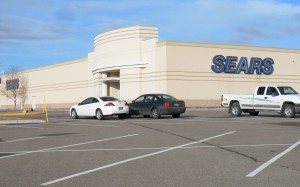17 October 2012, despite reports indicating crop destruction worldwide, and within the U.S., the U.S. Department of Agriculture (USDA) reports (in their newly released October 2012 report) that overall crop production in the United States is way up (if you throw out corn & soybeans).
A major indicator of crop destruction is the announcement by Farm Credit Service of America (FCSA) that insurance payouts, to U.S. farmers who’ve lost crops, will be at least $25 billion USD, but could hit $40 billion for 2012.
FCSA blames the insurance claims for most of the U.S. crop losses on drought. Even the USDA reported that the entire state of South Dakota is suffering severe to exceptional drought. South Dakota farmers, alone, have filed more $149 million in insurance claims.
Some states are now experiencing corn crop destruction because of early freezing temps. So, in states like Arkansas and Kentucky, not only have drought and cold weather hurt corn production, but the October/Halloween corn mazes aren’t happening because the stalks are too short. The result is that revenue from agritourism is going down (the USDA does agritourism surveys every five years, the last one in 2007).
It’s so bad that corn crops from the Midwestern states are considered destroyed (U.S. corn production is at its lowest point since 1995). The result is corn prices are soaring. By 15 October, corn commodity prices increased 5% at the Chicago board of trade.
Last year U.S. corn prices averaged $6.22 per bushel, this year the average is now $7.80! Some analysts say it’ll hit $8.25 before the end of the year.
The U.S. corn crop destruction is part of a worldwide decline in corn crops. Currently international corn stockpiles are 14 million metric tons below what was expected! (keep that in mind; “what was expected”, research UN data and you’ll learn that there’s still a lot of corn out there)
Apples are down as well. My own apple tree (here in Idaho), as well as my neighbors’ apple trees, have produce only a fraction of what they normally put out. In the state of Michigan apple farmers are reporting the same thing, saying their trees produced only 10% of normal output! An apple farmer in Michigan reports his agritourism revenues way down at his U-Pick apple farm.
In Indiana, apple farmers report getting only 25% of their normal apple harvest. The Washington Growers Clearing House reports that apple commodity prices are 13% higher than last year. But that’s good news for Washington state apple farmers; they’re reporting a record harvest.
Even with their record harvest, apple growers in Washington can not make up for crop loses in the rest of the U.S. As a result, with the high commodity prices for apples, Washington apple farmers could see a record $7 billion in revenue for 2012! By the way, if your willing to pick apples reports say Washington apple farmers are unable to fill 700 apple picking jobs.
Why the decrease in apples in the rest of the country? Some states are blaming earlier than normal freezing temps, but several states are reporting a plague of red squirrels. In Vermont some apple farmers report the squirrels ate half their crop. In South Carolina, squirrels are blamed for killing more than 100 apple trees.
While biologists suggest that warmer than normal temps caused an increase in squirrel populations (causing an increase in food sources), they admit no one could have predicted this year’s huge numbers of squirrels. The squirrels are now devouring apples because their normal food source, acorns and beechnuts, are way down this year.
Around the world, in Russia, Ukraine, Finland, Korea (north), India, Pakistan, and in African countries, crops have been destroyed by drought, or other extreme weather events like flooding.
In Japan, domestic agriculture has not only been affected by weather but by the ongoing nuclear disaster at Fukushima Daiichi.
In Afghanistan, farmers report hundreds of acres of crops destroyed by disease.
In Zimbabwe, farmers who couldn’t pay their electric bills had the power cut off to their irrigation pumps. A farmer said the power was cut without warning, even thought they tried to make payment arraignments with the utility company: “We admit we owe ZESA a debt of $3,000 but they should not have disconnected us without discussing our payment arrangements which we had submitted. The farmers were willing to settle their debts after harvesting their crop during the first week of November.”-Newton Gwetu
In India it’s not just weather, but animals. Farmers are reporting that their crops are being destroyed by rampaging wild boars and elephants. Elephant rampages have been reported since August.
It’s not just elephants in India, but elephants in African countries are also rampaging. In Tanzania, officials report elephants have destroyed villages and crops: “Up to now people are helpless and TANAPA [Tanzania National Park] rangers are just watching the destruction without taking any action.”-Jumanne Kwiro, Serengeti District Council
In Australia, the climate change is being blamed for driving feral pigs to eating farmers’ crops: “We’re seeing enterprises being destroyed, also pressure in grazing lands that we haven’t seen before. Going into drier seasons we’re really looking at grazing problems as well as destruction of crops.”-Rachel Pratt, Queensland’s AgForce
Australian ag officials are also concerned the exploding feral pig population will affect cattle: “Pigs carry diseases like bruscellosis, leptospirosis and paracites and also they can also carry potentially exotic diseases like foot and mouth.”-Ben Gardiner, Australian Veterinary Association
The International Center for Tropical Agriculture (CIAT) and the International Maize and Wheat Improvement Center (CIMMYT) recently reported that corn and wheat crops in Central America are expected to continue their downward trend, averaging a loss of $120 million per year by 2020: “Even with our most conservative estimates, it’s clear that climate change could transform the agricultural landscape across Central America.”-Anton Eitzinger, CIAT
One activist said farmers need to be more adaptable to radical changes in climate: “Extension services across the region need to be reinvigorated to train small farmers in soil and water management. And governments need to lead, they have the ability to make a real difference through setting climate-smart agricultural policies.”-Paul Hicks, Catholic Relief Services
War can be blamed for crop destruction as well. Not just the obvious destruction by bombing and gunfire, but illegal Israeli settlers, in Palestinian territory, have been actively destroying Palestinian olive trees. More than 500 Palestinian olive trees destroyed by illegal Israeli settlers, so far in 2012!
But what about crops that we don’t eat? The clothes on your back could be threatened as well. Cotton crops in Pakistan and India have been destroyed by recent floods. However, Indian officials have stated that many cotton farms that survived the floods will actually produce bumper yields. (also, cotton production in the U.S. is up, according to the October 2012 USDA report)
Again, those areas that are not suffering from crop destruction tend to be enjoying bumper crop yields, which means those farmers will also enjoy the higher revenue due to the higher commodity prices, created by speculators supposedly fearful of crop destruction.
While researching Food and Agriculture Organization of the United Nations (FAO) I noticed that their most recent graph of global food production shows a steady increase, year after year. Yet back in August, the UN actually asked the United States to stop bio-fuel production so those crops could be used for food!
The problem isn’t a lack of crops, the problem is the increasing cost to people who need to eat those crops.
There are several examples from the 1990s, such as U.S. rice rotting on Haitian docks because Haitians couldn’t afford to buy it, and African tomato farmers who left their crops to rot in the field because forced competition from Italian companies drove down tomato prices so low it wasn’t worth harvesting the fruits.
Is that what’s happening now, but on a global scale? Is this what our leaders mean by leveling the playing field of globalization?
I live in a state that is experiencing bumper crops: Idaho.
Idaho’s dry bean production is up 61% from 2011 (in fact bean production for the entire U.S. is expected to be 56% more than last year). Despite bean production being so high, speculators are also keeping prices for beans high. Commodity prices for beans are currently about 40 cents per pound, some bean prices are down from last year but they’re still near record highs: “That’s still the best price I’ve ever got myself! I’m not going to complain.”-Dana Rasmussen, Idaho bean farmer
The USDA says Idaho’s canola production has doubled from last year (canola production is also up in Washington & Oregon). Ag officials attribute this directly to higher commodity prices driven by speculators: “The number one reason for this increase is there have been excellent and very competitive prices available for farmers.”-Jack Brown, University of Idaho
Idaho’s alfalfa production was down 7%, but that reflects those hay farmers who do not have irrigated fields. Idaho hay farmers with irrigation actually saw bumper alfalfa yields: “I would say our yields were up a half to a ton per acre. It was a warm summer, and alfalfa loves heat and water.”– Will Ricks, Idaho Hay and Forage Association
Even though Idaho hay farmers with irrigation had bumper crops, the demand for those crops far exceeded supply: “Hay producers were getting calls from dairies in the Midwest. They were willing to pay $300 per ton plus shipping, but nobody had any hay to sell.”-Glenn Shewmaker, University of Idaho
Ag Officials from other states are lamenting just how much Idaho’s ag industry has grown: “Idaho has increased in just two years the equivalent of the entire state of Maine’s production. The July 2012 U.S. Department of Agriculture’s crop production report showed Oregon at 41,000 acres, Colorado at 55,000, Michigan at 46,000, Minnesota at 51,000, Maine at 59,000, New York at 17,000 and Wisconsin at 63,000 acres.”-Bob Davis, Maine Farmers Exchange
What is Bob Davis talking about? Idaho’s farming acreage has grown, in just two years, to 345,000. That’s 13,000 more than Oregon, Colorado, Michigan, Minnesota, Maine, New York and Wisconsin combined!!!
You might say Idaho’s ag industry is good for the economy, providing jobs for Idahoans. But that ain’t so. Most ag workers are migrants, and even though there’s a shortage of migrant workers many Idaho farmers complain that Idahoans aren’t willing to work for the peanuts they pay.
Idaho law states that farm workers must be paid minimum wage (currently $7.25 per hour in Idaho), however, if a farm laborer is “contracted” that’s a different story: “When I first talked to the farmer about work, he told me that he would pay me $14 per acre. I worked nine hours every day for over a week, but the work was so hard I was only able to do three acres a day. On payday, my boss made up all kinds of excuses and ended up paying me just $11 per acre, which comes out to about $3.60 an hour…. I didn’t know what to do. I have two children to feed.”–Gloria Paniagua, Cassia County, Idaho
Being a contracted farm worker is similar to being on salary, a really bad salary.
According to a report by Idaho Community Action Network, and the Northwest Federation of Community Organizations, the average wage earned by farm workers in Idaho is $5.97 per hour, working ten hours per day, six days per week.
So what’s the point of all this? There is no food shortage! Reports show that while there are massive crop losses, those farms still producing are producing record yields! UN agencies (FAO) report record global ag production almost year after year! Crony capitalist speculators (who’re probably working for the corporate farms) are driving up food prices, even when there is no shortage of the resources! Farmers with crops to sell are making big money because of the increased commodity prices and because of the dirt wages they pay their workers! Don’t forget to add in escalating transportation costs! The net result is everyone is going to pay unjustifiably more for their food at the grocery store or restaurant!
Did you get a pay raise?





